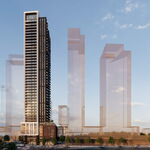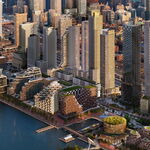nfitz
Superstar
I thought it was shown as 36 metres in the official plan ... or was it 30 metres. Either way, given the tail tracks go to west of Welbeck, and the portal would have to be west of Senlac, it seems there's enough room to expropriate along there.West of Welbeck: 37m : 22m
East of Senlac: 29m : 23m
West of Senlac: 37m : 23m
East of Easton: 34m : 23m
That would be all the way from Yonge to Senlac. I didn't say they went to Senlac. I said they went most of the way to Senlac.I hardly can believe that tail tracks are 970 m long
?? Why are you saying this? It's no secret how far the tail tracks go. The Welbeck emergency exit at the end of the tail tracks is on the north side of Sheppard between Welbeck and Senlac. 800 metres from Yonge Street.The tail tracks may be 400 or 500 m long, that's still more than 1 km from the West Don bridge (located 1,600 m west of Yonge).
Last edited:




